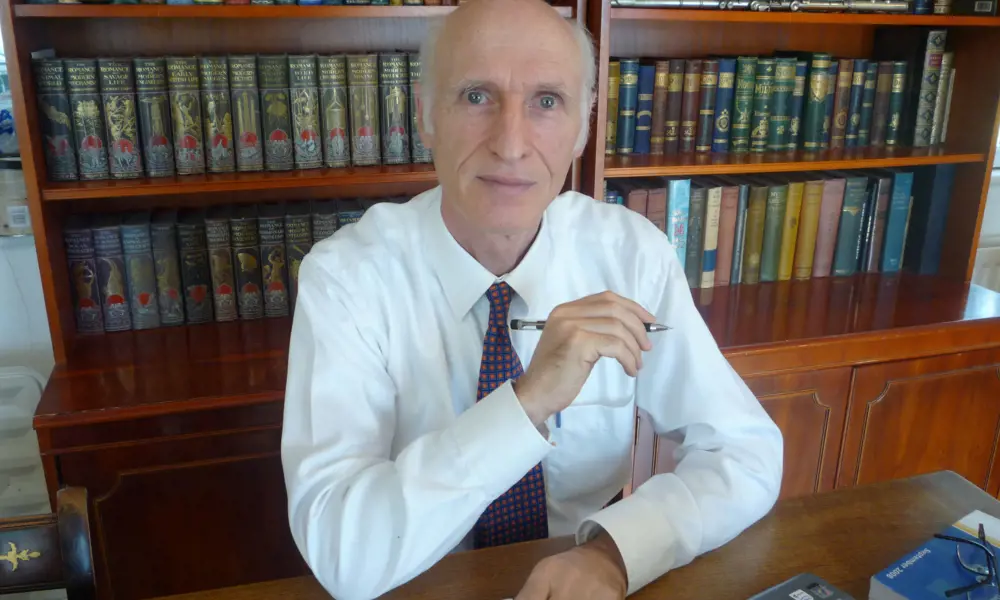
A spectrum of generations games
Stephen Temple’s work has changed modern communications, from his role in implementing early mobile communications networks to his current focus on 5G.
Young engineers with ambitions to change the world are hardly likely to think of a career in the civil service. Could a job in Whitehall help launch spacecraft, create new energy sources or lay the foundations for essential physical infrastructure? Professor Stephen Temple CBE FREng found that civil servants working behind the scenes can be crucial to the introduction of revolutionary technologies that have long-lasting social, economic and commercial impacts. For him, it happened more than once in his work on mobile telecommunications. The first was in 1987 with his ground-breaking GSM Memorandum of Understanding (MoU) that launched GSM (the Global System for Mobile communication) across Europe. More recently in 2016, Temple found a way to bridge a bureaucratic radio spectrum void that was to change the direction of 5G mobile networks in Europe.
The underlying theme in both “simple inventions”, as Temple describes them, was how policymakers can couple radio spectrum to a new generation of mobile technology. Spectrum allocation, an area where governments have a lasting interest, is the make or break decision for telecommunications: satellite links, radio and TV broadcasts, police communications and, these days, mobile telephones, all rely on the ability to use an area of the spectrum without fighting off interference from other uses.
civil servants working behind the scenes can be crucial to the introduction of revolutionary technologies that have long-lasting social, economic and commercial impacts
When Temple entered the fray, personal mobile telephones were still science fiction. Domestic telephones were strictly analogue. Even the switches used to place and route calls were mostly mechanical when Temple began his training as an apprentice at Marconi. At first, his career followed a traditional pattern. After completing his MSc in electronics at the University of Southampton he returned to Marconi, working as an engineer on satellite systems. He took note when a colleague suggested that, in the early stages of their careers at least, engineers who want to go places shouldn’t hang around too long in one job.
Job applications and moving on
Temple took this on board. When he had fulfilled his obligations to Marconi he sent job applications to several engineering companies, along with one to the civil service. The responses confounded his expectations. The civil service was quicker on its feet than industry and before any of the companies had even replied to his applications Temple had been interviewed and offered a job in the Ministry of Posts and Telecommunications. “Within a couple of months of joining the civil service I found myself at the 1971 World Administrative Radio Conference.” He was instantly the leading expert on spectrum sharing between satellites and radio relays. Temple admits that it was a steep learning curve. “The MSc was good training because it did allow you to dive into the deep end of something that you knew nothing about.”
It seems to have worked: Temple’s growing reputation for international technical negotiation landed him a job chairing a group preparing for the 1977 broadcasting satellite conference. “Anything to do with broadcasting in those days was really political,” he says “and I was a naïve engineer with much to learn about global disputes and tensions, some even within Europe.” During these international activities Temple came to see the power that engineers could potentially have in the civil service. The tradition in the UK is that civil servants advise and politicians decide. Temple realised that maybe there could be more to a career than doing a good job and the next promotion. “Suddenly the world opened up and perhaps my ambition should actually be to shape my country’s future.”
He came to realise that engineers in the civil service are well placed to make decisions that make a real difference to the country. Few politicians will understand engineering issues, let alone have a policy view on them. But as Temple points out, an engineer working in that environment has to understand politics, economics, the relevant industry and technologies. “If you could bring all of those together, there comes a point of change, and if you have a supportive minister that is up for doing something ambitious in your field, you can set a new direction for the entire country.
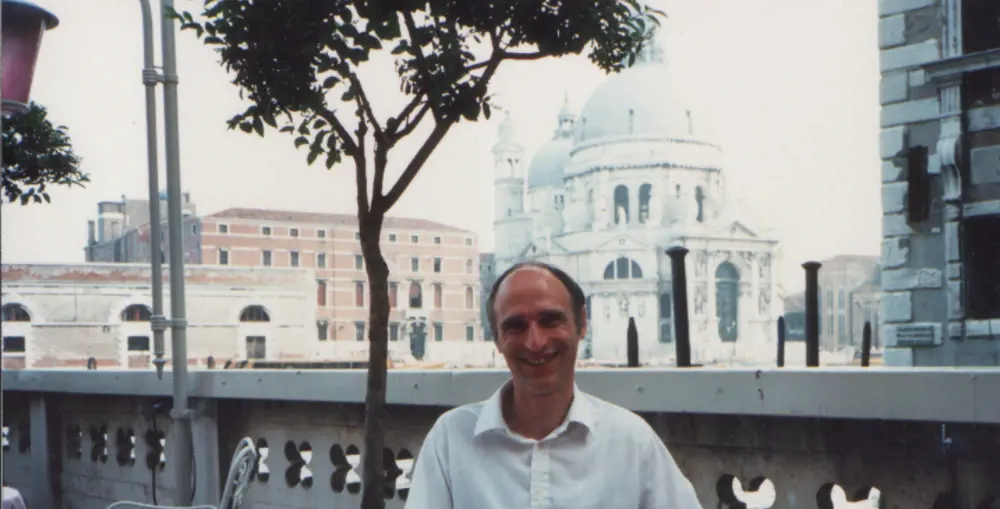
In 1987, Stephen Temple helped produce a quadripartite agreement between Germany, France, Italy and the UK that committed them to a common strategic vision for Europe’s mobile radio infrastructure and lit the fuse for the GSM revolution. It was signed in Venice in 1987
International standards for the next generation of mobile communications
Sometimes you have to manoeuvre yourself into a position to achieve that ambition. One less common way to achieve this is to spot a new need and write your own job description for it. Seeking a way out of several years in what he dubs a treadmill telecoms job in the Home Office, Temple came up with an idea that would put him back into international affairs. The government planned to privatise British Telecom in 1984. As a state industry, British Telecom had represented the UK in international standards bodies. As Temple saw it, the task of representing the UK’s national interests belonged back in government. “You couldn’t have BT wrapping up new international standards to suit its own interests but not those of its new competitors. It seemed to me that that was not consistent with a competitive infrastructure market.” So, in the run up to the privatisation, Temple decided to write his own job specification. “I wrote to the undersecretary out of the blue to say I think you have a need for a senior technical person to lead and represent the UK in all the international standards bodies.”
Temple moved to the Department of Trade and Industry, where he found that the international negotiations on the next generation of mobile communications, GSM, were bogged down in European national politics. There then began a long saga as countries and companies fought to get their ideas adopted (Temple has described the process in detail in his book Casting the Nets: From GSM to Digital TV). The political breakthrough came in the choice of technology. A spectrum band had been found for GSM. But nobody had worked out how it would be launched and survive in the still fragmented national markets, where fierce competition was coming very fast around the corner. Temple was one of the first to spot that “instant” scale for mobile phones would be the difference between life and death. He had to invent something quite new: it had to finely balance cooperation with competition. His solution was set down in one of the most important documents to come out of the mobile industry – the GSM MoU.
His solution was set down in one of the most important documents to come out of the mobile industry – the GSM MoU
Temple likes to describe the GSM MoU as the “invention of a risk-free high-tech delivery model”. It does this by bringing together a critical mass of network operators willing to take the high-tech risks out for each other by combining their network-buying power behind a single standard and common launch window. The success of the model came as a big surprise. Nobody wanted to be left out. Every mobile network operator in Europe ended up signing the MoU. But that was just the start. It swept GSM around the world to create a homogeneous global industry with its unique mix of cooperation and competition. Over the typical life cycle, a trillion dollars of investment feeds into the supply chain behind each new generation of mobile technology. On that scale the industry is not left predicting the mobile technology future – it makes it. Every research lab in the world is coupled into the same standards body and rapidly feeding back solutions to any technical glitch that emerges. Temple’s model has been the basis of launching every new generation of cellular mobile technology since – “without a single failure”.
The other major development that arose from Temple’s GSM MoU was ‘global’ roaming. “It created quite an inspiring idea for travellers. You could land anywhere. You just switched your phone on, you did not have to do any registration or logging in. It just worked.” And all of this was in a document that is just eight pages long. The result was that mobile phones had a far more successful global penetration than computers or the internet had achieved. “Coupling the two together has brought today’s successful mobile computing revolution across the world.”
What could 5G do?
Temple’s second significant international intervention came later in his career, after he had retired. Again, the challenge was to sort out an international impasse, this time in radio spectrum for 5G. New generations of mobile telecoms come along every decade or so. Every generation has its limits “baked in”, Temple explains. “The whole idea of the technology generation change is to break those limitations and to be able to carry on expanding the market and capabilities.”
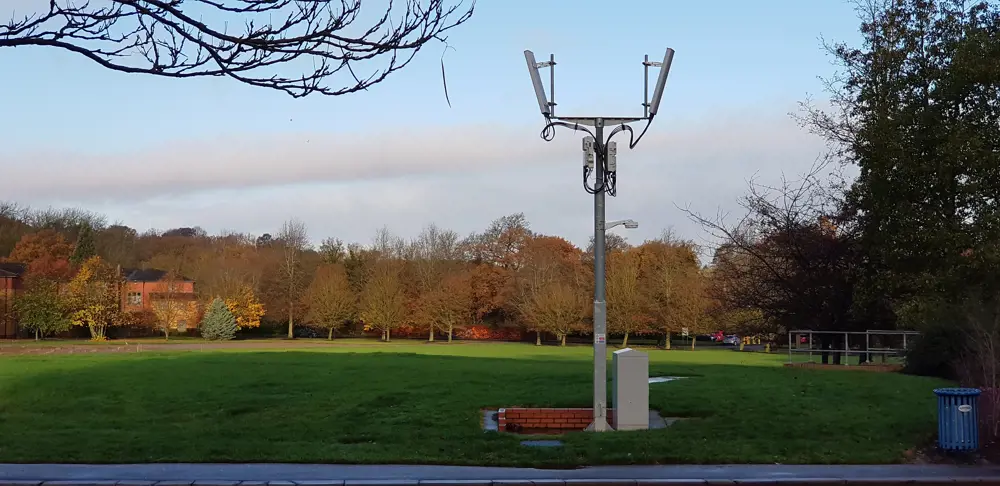
A 4G small cell tower that is part of the University of Surrey 5G Test Bed
Around 2012, people started thinking about what 5G would do. Temple believes that talks about that future spun in the wrong direction. He observed that the millimetre-wave components industry had quickly climbed on board, after hearing that 5G might use spectrum around 28 GHz. That would open up the billion-dollar market to them. “They more or less hijacked 5G.” Between 2012 and 2015 everyone just assumed 5G would use 28 GHz. The entire focus was on an International Telecommunication Union conference in 2015 to turn it into a world-wide allocation. To everyone’s shock, the conference decided the 28 GHz band was not going to be available in Europe for 5G. All that investment in the new technology and no bandwidth to roll it out in meant that the wheels had just fallen off the 5G bandwagon in Europe.
By then, Temple was a visiting professor in the 5G Innovation Centre (5GIC) at the University of Surrey. Unbeknown to Temple, Professor Rahim Tafazolli, the head of the 5GIC, was watching the 5G fiasco unfold. Call in Temple, was Tafazolli’s suggestion. “He didn’t ask me. He just said ‘I’ve told the guys in Brussels that if anybody can sort this out you can’.”
He didn’t ask me. He just said ‘I’ve told the guys in Brussels that if anybody can sort this out you can

Simplified guide to cellular mobile technology generations
Once again, Temple was confronting a politically messy state of affairs. But where to begin? “I hadn’t got a clue. I had been out of spectrum management for a great deal of time.” Temple soon discovered that politics, spectrum and technology standards had become separated into watertight compartments. Talking about specific bands in the research community had also become frowned upon. “Because spectrum was bought and sold for billions, companies had regulatory affairs people in the mobile companies, whose job was focusing on specific spectrum bands.” Temple’s next ‘little invention’ came to the rescue. He asked himself how the research community could give itself a license to talk freely about specific spectrum bands. He cooked up something he called the ‘5G Pioneer Band’. His argument was “let’s talk about the bands we would use for our research testbeds that would stand the best chance of being the same bands that would be rolled out commercially”. That freed up conversations to talk about what commercially viable solutions might look like.
Temple said that 5G started in the wrong place in 2012. Everyone had embraced the assumption that 5G band would use 28 GHz before they had even looked at the problems 5G was setting out to solve. The 28 GHz spectrum band would provide massive data transfer rates for very nearby devices, but anything further away would be left in what Temple describes as “great valleys of darkness”. The band was hopeless for covering wide areas. It would be taking out the great selling point of the personal smart phone – using it anywhere.
A mobile museum
📱 The most photographed mobile collection in the world
Many people have an obsolete mobile phone or two sitting at the bottom of a desk drawer. Professor Stephen Temple started from there and says he “now has the most photographed mobile collection in the world”. Not because of the collection but because his collection is on display at the 5GIC at the University of Surrey and ”all the VIPs stand in front of it when they are photographed!”
He started the collection after writing a book, A political history of GSM. To add some technical interest he included a piece on the 25 phones that changed the world. Finding he had several of them sitting in his desk drawer, Temple started on an auction treasure hunt to find the phones from the story. However, the story was expanding faster than he could find the phones so he split it into technology milestones and great industrial designs.
Temple reels though some of the phones on display and their role in the development of the industry. There is the world’s first camera phone, the Sharp J-SH04. Sharp had a hard time trying to persuade the Japanese mobile operators to take the idea seriously because the they didn’t see the point of a poor-quality camera on a mobile phone. Eventually the smallest operator, J-Phone, ordered a batch of 10,000 phones, with only 2,000 with a camera. Temple finds it amusing that when he visited J-Phone two years later, many of the 8,000 camera-free handsets were still sat in a warehouse, unsold. The 2,000 camera phones had sold out almost immediately.
Between 2000 and 2007, there was a golden age of great design. Temple’s collection contains a lipstick phone, a powder compact, a chocolate bar, and one that looked like a melted strawberry. The innovations in handsets didn’t all come from industry giants. Take Technophone: a small UK company that came up with the first mobile telephone that you could put in a pocket, admittedly a large one. Another museum piece is the Hagenuk device with the first game on a mobile phone. The company was also the first to have an internal aerial as opposed to an external aerial. Then there was the small Norwegian company that came up with the ‘swipe’ idea several years before Apple introduced it in their industry game-changer, the iPhone. It was announced recently that one of the most popular industrial designs, the Motorola Razr, is making a come-back this year, complete with a folding screen.
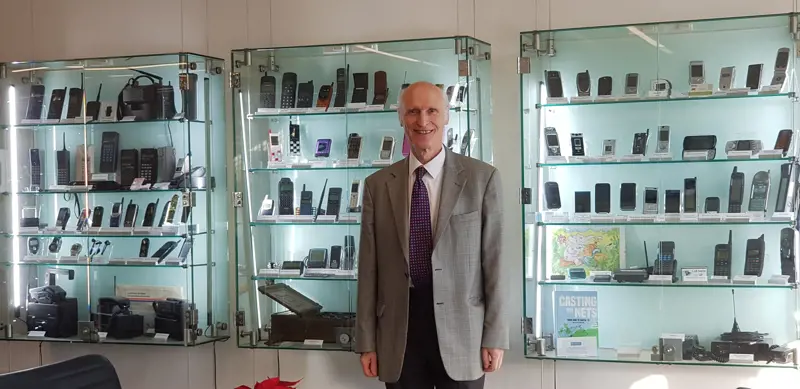
Stephen in front of his mobile collection at the University of Surrey’s 5G Innovation Centre
5G's coming of age
Temple latched on to the fact that mobile operators weren’t using just one band for their 4G networks to deliver both wide coverage and high capacity. Essentially two networks were being rolled out in parallel, one for coverage that was overlaid with another for capacity in high traffic areas. But 5G needed both coverage and capacity. This brought out the idea of finding a ‘sweet spot’ band that was the best mix of both attributes. Temple proposed to his European research collaborators that 5G in Europe in fact needed three bands: one purely for best coverage (700 MHz), one for maximum capacity to deal with super-hot spots of traffic (26 GHz) and the third at this ‘sweet spot’ that was identified at 3.6 GHz. It set Europe on an entirely different, and considerably better, direction of travel for its future 5G infrastructure.
That fundamental thinking was done by Temple in March 2016 and by September his idea of three ‘5G pioneer bands’ had travelled through the various European bodies to finish up in Europe’s 5G Action Plan being signed off at an EU Telecoms Council.
The industry may be shouting about its 5G services, but it’s still early days for the technology. It isn’t clear which application will take off. Some observers see 5G as the way to deliver Industry 4.0, or the fourth industrial revolution, joining up all parts of the manufacturing chain. So far, enhanced mobile broadband has been the first application to catch on. “That is the one that everybody is rolling out and it will take three to four years for its full impact to be felt,” says Temple. “but the huge boost in capacity will come just in time for millions using data hungry applications.” However Temple foresees trouble ahead on the coverage front. “There will be the most incredible digital divide across the country.”
One of the things that makes spectrum management so complicated is that there are layers and layers of legacy. I can see work that I did in 1971 is still there
Career timeline and distinctions
Born, 1944. Apprenticeship at Marconi, 1961. MSc in Electronics, University of Southampton, 1966. Deputy Director, Home Office Directorate of Telecommunications, 1979. GSM Memorandum of Understanding signed, 1987. Visiting Professor, University of Surrey, 2013. Fellow of the Royal Academy of Engineering, 2014.
His view is that people will grow used to moving seamlessly between their fibre-connected homes and fibre-connected buildings. 5G will take up the slack as they travel between the two, but woe betide anyone stuck on an older generation. “When you move out of 5G coverage you really will fall off a cliff edge. And 4G networks are going to be really stressed out, because there just isn’t the bandwidth.” For Temple, the problem is that the regulator is not looking far enough ahead. They have settled on 2 Mb/s as being the “universal” data rate. Temple protests at that idea: “2 Mb per second! What is that going to look like 10 years from now?”
“This is where I sense that we should be doing something now for a problem that is going to hit us in five to seven years’ time. The 5G regulatory framework is still not right.” Temple isn’t sitting back and awaiting developments. Inspired by the Department for Digital, Culture, Media and Sport’s market expansion model (set out in the government’s Future Telecommunications Infrastructure Review), in which new players are helped to provide 5G coverage in the gaps left by the mobile operators through giving them low cost access to spectrum, he recently took on the task of chairing a spectrum policy forum group on how to share mobile spectrum.
Temple believes that he still has one unique experience to offer the new generation of engineers coming into the radio spectrum field. “One of the things that makes spectrum management so complicated is that there are layers and layers of legacy. I can see work that I did in 1971 is still there.” There can’t be many engineers whose current activities can draw on their own work from nearly half a century ago.
***
This article has been adapted from "A spectrum of generations games", which originally appeared in the print edition of Ingenia 81 (December 2019).
Contributors
Michael Kenward OBE
Author
Keep up-to-date with Ingenia for free
SubscribeRelated content
Electricals & electronics

Accelerometers
Used in earthquake measurements, laptops, planes and even in stargazing apps, today’s accelerometers are much smaller than when they were first developed in 1927. Find out how they detect movement and vibration.
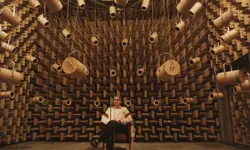
How to maximise loudspeaker quality
Ingenia asked Dr Jack Oclee-Brown, Head of Acoustics at KEF Audio, to outline the considerations that audio engineers need to make when developing high-quality speakers.

Cable fault locator
The winner of the Institute of Engineering and Technology’s 2014 Innovation Award was EA Technology’s CableSnifferTM, which uses a probe and chemical sensing technology to identify faults, saving energy companies millions of pounds each year.

High speed evolution
In December 2010, Eurostar International Ltd awarded a contract for 10 new high speed trains to Siemens. The company has used a system developed over decades to maximise the performance and passenger-carrying ability of its 320km/h trains.
Other content from Ingenia
Quick read

- Environment & sustainability
- Opinion
A young engineer’s perspective on the good, the bad and the ugly of COP27

- Environment & sustainability
- Issue 95
How do we pay for net zero technologies?
Quick read

- Transport
- Mechanical
- How I got here
Electrifying trains and STEMAZING outreach

- Civil & structural
- Environment & sustainability
- Issue 95